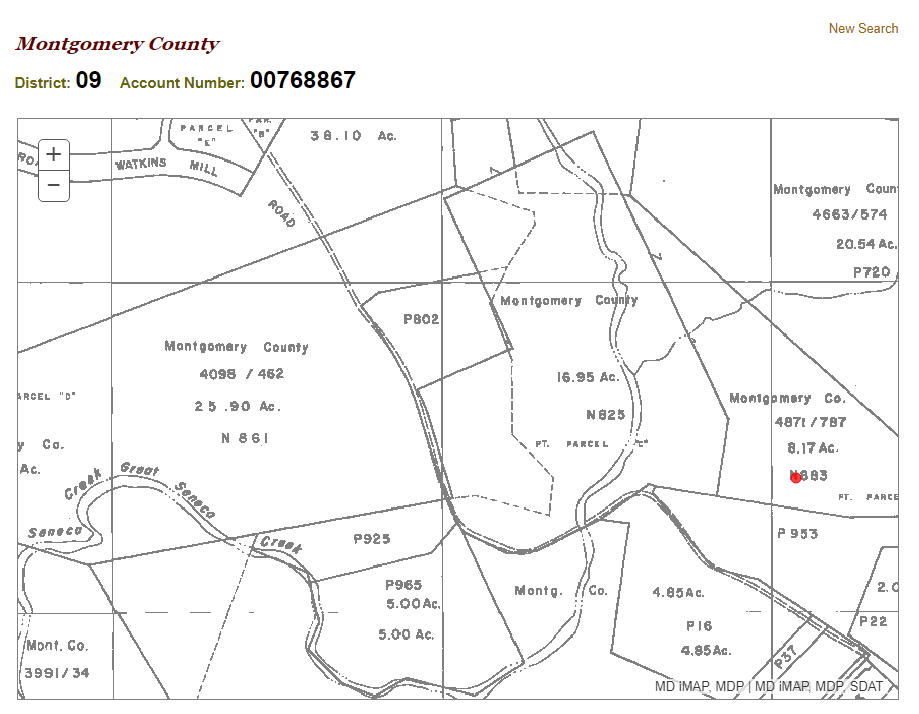By Adam Pagnucco.
Back on November 3, David Lublin wrote that the County Council had placed the planned Upcounty highway M-83 “in the freezer.” We agree with that take with one addition: if and when M-83 comes out of that freezer, it will be ready to serve. That’s because instead of killing the road, the resolution passed by the County Council has preserved it for a future county government to build.
To understand what has happened, one has to consider the goals and challenges of road supporters and opponents. The supporters want to fund its construction. That’s tough because the road will cost roughly half a billion dollars and the county is reducing its annual issues of general obligation bonds to trim future debt service. Opponents want to remove the road from the county’s master plans. They believed they had a chance to do that since six Council Members said they opposed M-83 during the 2014 elections. But that has not happened.
The council’s resolution, passed on Halloween, did not implement the agendas of either side. Its action language is worth reading word for word.
The County Council for Montgomery County, Maryland approves the following resolution:
-
The Council supports expanded capacity on I-270, the Corridor Cities Transitway, Bus Rapid Transit on or near MD 355, and improvements on MD 355. These improvements will provide significant, immediate relief for Upcounty residents. These improvements align with our economic development strategies, providing the broadest and most diverse benefits, and minimize impervious surface, stormwater runoff, carbon emissions, and other environmental impacts.
-
The Council directs the Montgomery County Planning Board not to assume additional road capacity from the northern extension of Midcounty Highway when calculating the land use – transportation balance in future master plans, including but not limited to the upcoming Gaithersburg East Master Plan and the Germantown Plan for Town Sector Zone. This step ensures that any new development allowed under these plans does not rely on the northern extension of Midcounty Highway, while retaining the right-of-way for this extension in these plans.
Road supporters did not like the omission of M-83 from the list of projects supported by the council. They should have no argument with the idea of not including M-83’s capacity in calculating infrastructure needs for future development. That could help prevent the road from filling up immediately after it’s built (if it’s built). But the last sentence referring to “retaining the right-of-way for this extension” is a big win for supporters of M-83.
Why does this matter? A casual perusal of land ownership maps from the State Department of Assessments and Taxation shows massive county land holdings in the vicinity of M-83’s preferred alternative. Identifying every one of the dozens of parcels owned by the county and county-affiliated entities there would be a time-consuming research project.
A sample of county-owned land for M-83 near Watkins Mill Road and Great Seneca Creek.
Instead, we asked the county Department of Transportation’s project manager for M-83 how much of the right-of-way for the road’s preferred alternative was currently owned by the county and state. We received this response.
Dear Mr. Pagnucco:
Thank you for your interest in the Midcounty Corridor Study (M-83) project. Per our preliminary assessment, approximately 60% ROW for M-83 has been dedicated or reserved and another 24% is in parklands owned by the County’s Parks.
Should you have any questions, please contact me.
Best regards,
Gwo-Ruey (Greg) Hwang, P.E.
Capital Projects Manager
That’s right, folks – the county and Park and Planning together control 84% of the right-of-way for M-83 right now.
Why does this matter? Let’s remember the history of the Intercounty Connector. The highway had been in master plans for decades. As of 1997, the county and state owned more than half the right-of-way for the ICC. The following year, Governor Parris Glendening announced he was killing the project and later told the state government to sell part of its right-of-way. But the state did not sell off all its right-of-way and in fact purchased some of it after Glendening’s announcement. Continued state ownership of the ICC’s right-of-way made it much easier for Glendening’s successor, Governor Bob Ehrlich, to reverse his decision and begin construction.
So it may be with M-83. The county’s holdings of right-of-way for the project may be even greater as a percentage of its acreage than the state’s holdings of the ICC were a decade before its construction. The resolution by the council explicitly calls for “retaining the right-of-way” in the master plans, suggesting that the county’s holdings will not be sold. And the road has not been removed from any master plans, a key goal of opponents.
M-83 supporters should have hope. M-83 opponents should beware. Both sides have a lot of work to do in next year’s elections.

